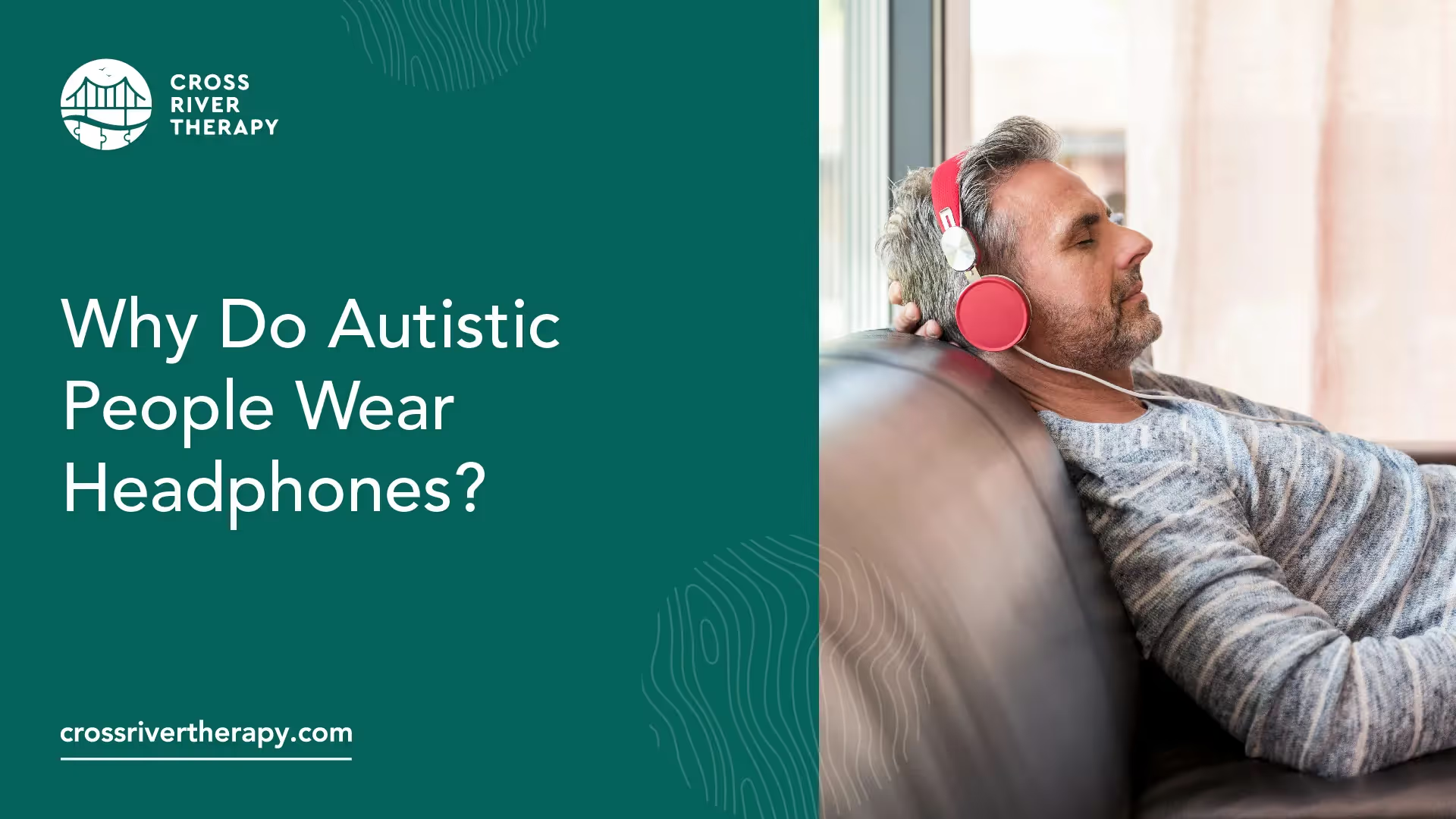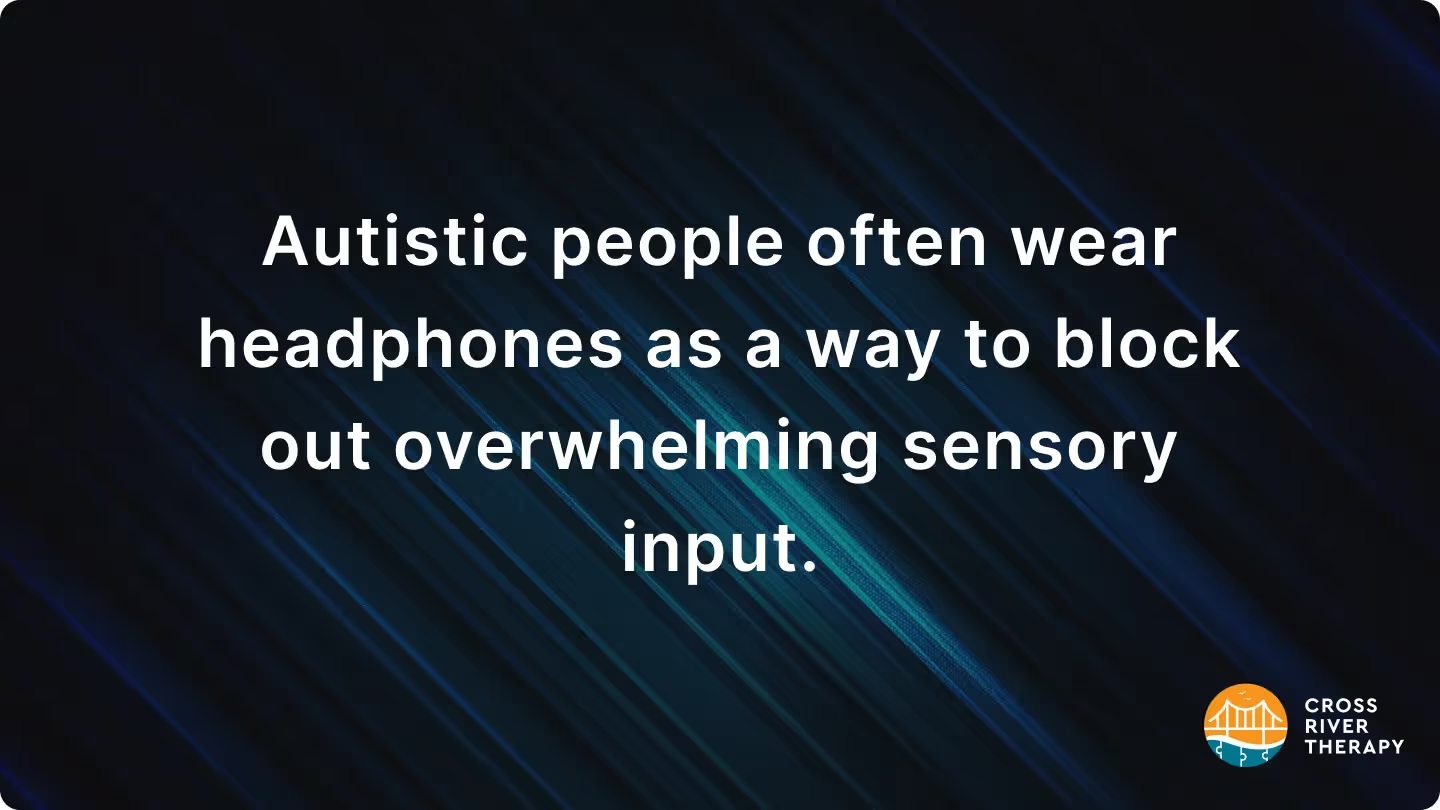Why Do Autistic People Wear Headphones?
Autistic people often wear headphones as a way to block out overwhelming sensory input.

Why Do Autistic People Wear Headphones?
Autistic people often wear headphones as a way to block out overwhelming sensory input. For many autistic people, particularly those who are nonverbal, headphones can be a lifeline to a calmer state of mind. But why do autistic people wear headphones? And what does it mean for the rest of us?

Headphones can help autistic people block out overwhelming noise and sensory stimuli
From cramming for exams in the library to commuting on noisy trains, headphones are often used as an important tool for blocking out external sounds and distractions.
For some autistic people, these same distractions can become overwhelming, causing difficulty focusing and anxiety. In this case, headphones provide an additional benefit of blocking out the heightened sensory information that can be difficult for autistics to process.
With access to specialized noise-cancelling headphones, many autistic people find themselves better able to handle loud or chaotic environments. While no two autistic journeys are the same, headphones can help each person manage their own sense of sound and balance in the world around them.
They can also provide a sense of calm and focus for people who are feeling overwhelmed
Meditating can be a great way to reduce stress and restore balance in one's life. It has been proven to reduce anxiety and provide deep mental and physical relaxation.
Aside from the stress-reducing benefits, meditation can also give people a sense of calmness that helps them regain focus when they're feeling overwhelmed by the chaos of daily life. Not only does it help improve concentration and creativity, but it can also bring clarity to stressful situations and help a person view them in a positive light.
With this improved perspective, people are able to better manage their feelings and retrain their brains to react more calmly to life’s challenges. By taking time out each day for some peaceful contemplation, we can all lead healthier, less stressful lives.
Autistic people may also use headphones to listen to music or other calming sounds
Autistic people can experience sensory overload in environments such as malls, airports, or classrooms. One way to combat these uncomfortable situations is by using headphones to listen to music or other calming sounds.
Listening to an autistic person's favorite songs or nature recordings like beach waves can provide significant relief.
This strategy helps those with autism maintain adequate levels of focus and concentration, allowing them to better cope with the situation at hand. Additionally, it may even pave the way for more meaningful interactions and connection with those around them.
In some cases, headphones can also help autistic people communicate better with others
Communication can be a challenge for people on the autism spectrum. Headphones are one way that autistic people can bridge the gap between themselves and others, as they help reduce sensory overload when interacting with the world.
By using headphones to adjust the volume of conversations and other sounds in the environment, people with autism find it easier to stay focused on what is being said and actively participate in social settings.
In fact, research has found that headphones can lower levels of anxiety and improve communication skills for those on the autism spectrum. Experts believe that this technology could open up more opportunities for people with autism to engage socially, becoming active members of their communities.
Finally, wearing headphones can be a way for autistic people to assert their independence and control over their environment
For individuals with autism, having the right to take control of their environment is a powerful experience. Wearing headphones can serve as a way for autistic people to feel in charge and self-assured.
Not only does this feeling of ownership provide a sense of security, but it also gives them the freedom to regulate their listening environment and block out auditory distractions in order to reduce sensory stressors.
With the use of headphones, autistic individuals can take ownership of their soundscape and generally have greater confidence in their ability to make decisions about the sounds they wish to engage with.
Conclusion
Headphones can be a valuable tool for autistic people, helping them to block out overwhelming noise and sensory stimuli. They can also provide a sense of calm and focus, and in some cases may help autistic people communicate better with others. Wearing headphones can also be a way for autistic people to assert their independence and control over their environment.



